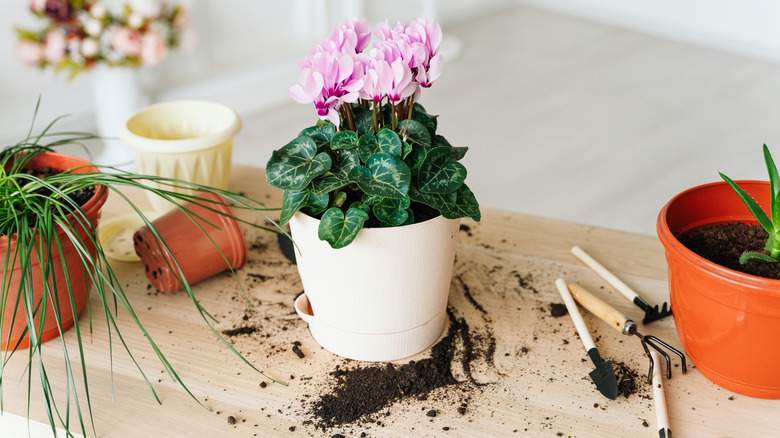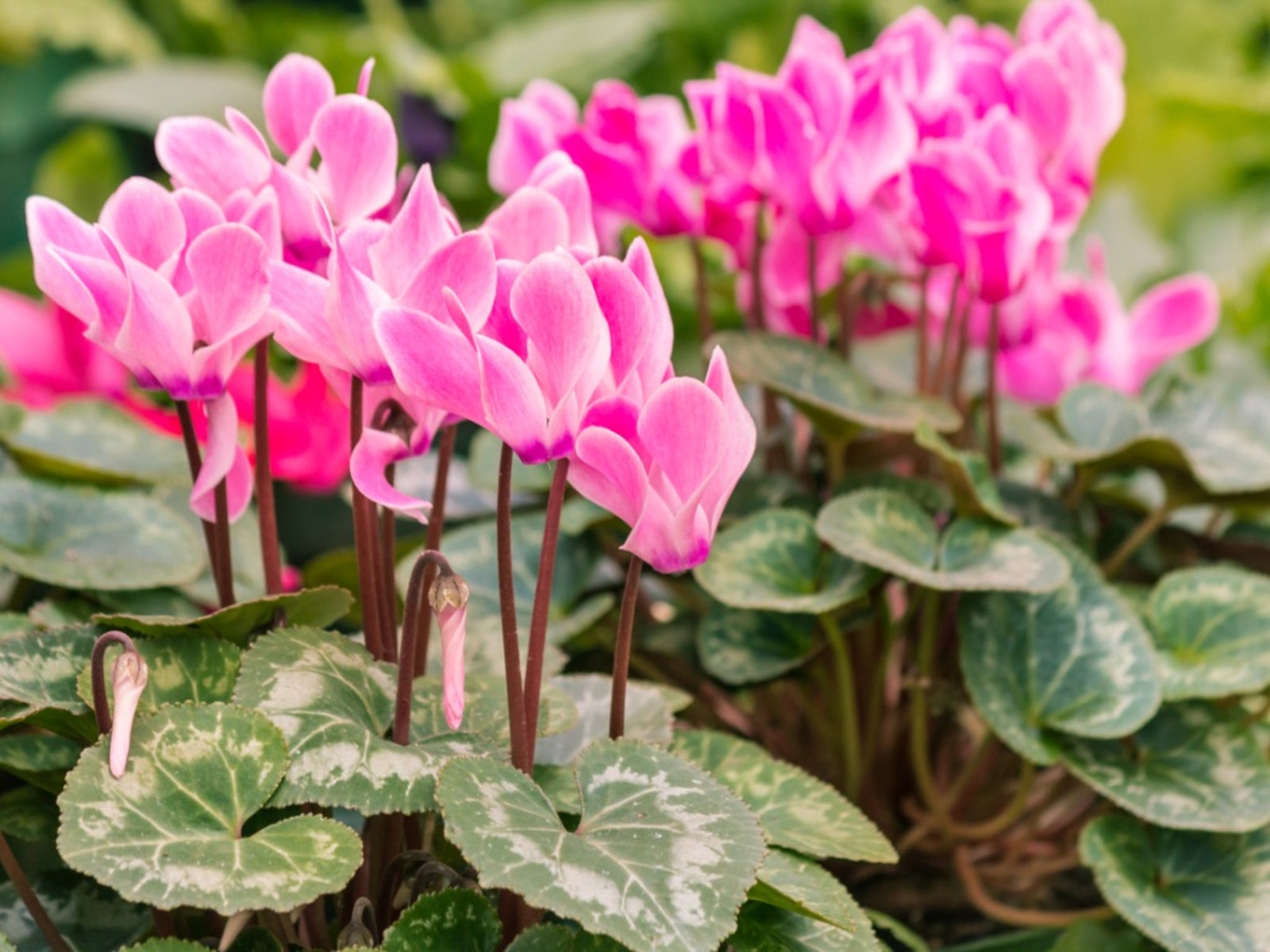Unlocking the Secrets of Cyclamen Success
Cyclamen plants are a popular choice for indoor gardens due to their delicate, heart-shaped leaves and vibrant, nodding flowers. To keep these beautiful plants thriving, it’s essential to understand their unique needs and learn how to take care of a cyclamen plant. By providing the right environment, watering, fertilizing, pruning, and pest control, you can enjoy the many benefits of growing cyclamen plants. With proper care, cyclamen plants can bloom for several months, adding a touch of elegance and sophistication to any room. In this article, we will delve into the essential tips and techniques for taking care of a cyclamen plant, helping you to become a cyclamen expert and enjoy the beauty of these lovely plants.
Providing the Perfect Environment
To thrive, cyclamen plants require a specific environment that replicates their natural habitat. Temperature is a critical factor, with ideal temperatures ranging from 60°F to 70°F (15°C to 21°C) during the day and no lower than 55°F (13°C) at night. Humidity is also essential, with a relative humidity of 50-60% ideal for promoting healthy growth. In terms of light, cyclamen plants prefer bright, indirect light, making east- or west-facing windows ideal. To create the perfect environment at home, consider using a humidifier, placing the plant on a tray filled with water and pebbles, and positioning it near a window with a sheer curtain to filter the light. By providing the right environment, you’ll be well on your way to learning how to take care of a cyclamen plant and enjoying its beautiful blooms.
The Watering Conundrum: How to Get it Just Right
Watering is a crucial aspect of cyclamen plant care, and getting it right can be a delicate balance. Overwatering is a common mistake that can lead to root rot and other problems, while underwatering can cause the plant to become stressed and drop its leaves. To avoid these issues, it’s essential to check the soil moisture regularly. Stick your finger into the soil up to the first knuckle, and if the soil feels dry, it’s time to water. Water your cyclamen plant thoroughly, making sure the pot drains well to prevent waterlogged soil. Avoid getting water on the leaves or crown of the plant, as this can cause rot and other problems. When learning how to take care of a cyclamen plant, it’s essential to understand the importance of proper watering techniques. By watering correctly, you’ll be able to enjoy the beautiful blooms and foliage of your cyclamen plant.
Fertilizing for Optimal Growth
Fertilizing is an essential aspect of cyclamen plant care, as it provides the necessary nutrients for healthy growth and blooming. When learning how to take care of a cyclamen plant, it’s crucial to understand the importance of fertilization. Cyclamen plants benefit from balanced, water-soluble fertilizers that are applied at half the recommended strength. Avoid using high-nitrogen fertilizers, as they can promote leaf growth at the expense of blooms. Instead, opt for fertilizers that are high in phosphorus, which promotes root development and flowering. Apply fertilizer once a month during the growing season, and avoid fertilizing during the dormant period. By fertilizing correctly, you’ll be able to enjoy the vibrant blooms and lush foliage of your cyclamen plant. Remember, proper fertilization is key to unlocking the full potential of your cyclamen plant and ensuring its beauty and longevity.
Pruning and Grooming: Maintaining Shape and Promoting Health
Pruning and grooming are essential aspects of cyclamen plant care, as they help maintain the plant’s shape, promote healthy growth, and encourage blooming. When learning how to take care of a cyclamen plant, it’s crucial to understand the importance of regular pruning and grooming. Start by removing dead flowers and leaves, as these can attract pests and diseases. Use clean, sharp scissors or pruning shears to prevent spreading diseases. Next, trim back leggy stems to encourage bushy growth and promote new blooms. Remove any weak or spindly growth, as this can divert energy from the rest of the plant. Finally, gently dust the leaves with a soft-bristled brush to remove any dirt or debris. By pruning and grooming regularly, you’ll be able to maintain the beauty and health of your cyclamen plant, and enjoy its vibrant blooms for months to come. Remember, proper pruning and grooming techniques are key to unlocking the full potential of your cyclamen plant and ensuring its longevity.
Pest Control and Common Problems
When learning how to take care of a cyclamen plant, it’s essential to be aware of common pests and diseases that can affect its health. Cyclamen plants are susceptible to pests like spider mites, mealybugs, and aphids, which can cause damage to the leaves and stems. Regularly inspect your plant for signs of infestation, such as white powdery residue, tiny eggs, or actual pests on the leaves. If you notice any of these signs, treat your plant with insecticidal soap or neem oil. Fungal diseases like root rot and leaf spot can also affect cyclamen plants, especially if they are overwatered or exposed to high humidity. To prevent these diseases, ensure good air circulation, avoid overwatering, and remove any infected leaves or stems. By being proactive and monitoring your plant’s health, you can prevent common problems and ensure your cyclamen plant remains healthy and thriving. Remember, proper pest control and disease prevention are crucial when learning how to take care of a cyclamen plant and ensuring its beauty and longevity.
Repotting and Propagation: Giving Your Cyclamen a Fresh Start
When learning how to take care of a cyclamen plant, it’s essential to understand the importance of repotting and propagation. Cyclamen plants typically need to be repotted every 2-3 years, as their potting mix can become depleted of nutrients. Choose a potting mix that is well-draining and specifically designed for cyclamen plants. When repotting, gently remove the plant from its pot, taking care not to damage the roots. Trim away any dead or damaged roots, and replant the cyclamen in its new pot, using fresh potting mix. Water thoroughly after repotting to settle the soil. Propagation is also a great way to share your cyclamen plant with friends and family, or to create new plants for yourself. Cyclamen plants can be propagated through division, where you separate the tubers and replant them in new pots. Make sure each division has at least one “eye” or growing point, and plant them in a pot filled with fresh potting mix. Keep the soil moist and warm until new growth appears. By repotting and propagating your cyclamen plant, you’ll be able to give it a fresh start and ensure its continued health and beauty. Remember, proper repotting and propagation techniques are key to unlocking the full potential of your cyclamen plant and ensuring its longevity.
Troubleshooting Common Issues
When learning how to take care of a cyclamen plant, it’s essential to be aware of common issues that can arise and know how to troubleshoot them. One common problem is droopy leaves, which can be caused by overwatering, underwatering, or a lack of humidity. To address this, check the soil moisture and adjust your watering schedule accordingly. You can also increase the humidity around your plant by placing it on a tray filled with water and pebbles. Yellowing leaves can be a sign of too much direct sunlight or a lack of nutrients. To combat this, move your plant to a spot with bright, indirect light and fertilize it with a balanced fertilizer. If your cyclamen plant is not producing blooms, it may be due to a lack of light or a temperature that is too high. Try moving your plant to a brighter location and keeping the temperature between 60-70°F (15-21°C). By being proactive and addressing these common issues, you can ensure your cyclamen plant remains healthy and thriving. Remember, understanding how to troubleshoot common problems is a crucial part of knowing how to take care of a cyclamen plant and enjoying its beauty for years to come.



:max_bytes(150000):strip_icc()/close-up-of-red--pink--and-fuchsia-colored-cyclamen-121305932-5c43890746e0fb000146b765.jpg)


:max_bytes(150000):strip_icc()/close-up-of-red-and-pink-mini-cyclamen-in-blue-pots-with-ivy--hedera---and-ragwort--senecio--122005490-5c438917c9e77c0001a2db39.jpg)

